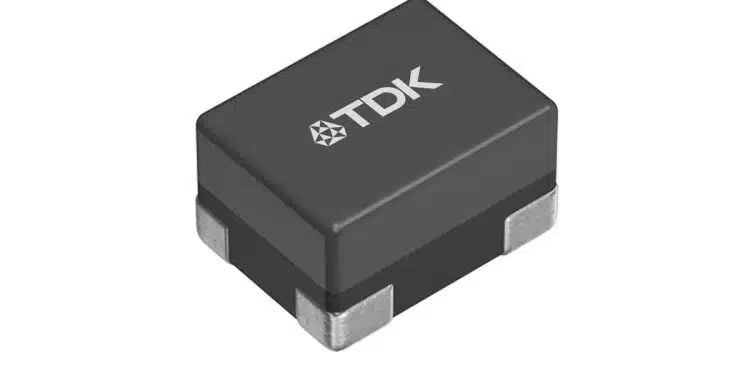TDK launches industry’s smallest thin-film common mode filters for high-speed differential transmission applications to suppress noise in high-speed differential transmission, as well as high common mode attenuation.
TDK Corporation announced introduction of its new TCM0403T series of noise reduction common mode filters for high-speed interface differential transmission (0.45 x 0.3 x 0.23 mm – L x W x H). Mass production of the product series began this month, June 2023.
In recent years, as digital electronic equipment has become more sophisticated and multi-functional, the speed of transmission signals has increased. The noise emitted from the related equipment has a high frequency, interfering with other devices and affecting communication.
The TCM0403T-200-2P-T210 and TCM0403T-080-2P-T210 products in this lineup have a differential insertion loss cutoff frequency of 8 GHz or higher and can support transfer speeds up to a maximum of 12 Gbps. Common mode attenuation, which is an important index for noise countermeasures, has improved in this series compared to conventional products. TCM0403T-200-2P-T210 offers a high common mode coil attenuation of 42 dB at 2.4 GHz, and TCM0403T-080-2P-T210 products have a high common mode attenuation of 34 dB at 5.0 GHz.
The coil conductor pattern is designed using TDK’s proprietary fine patterning, which uses a thin-film production method and applies a technology cultivated through the development of TDK’s magnetic heads. The implementation of this industry’s new smallest size common mode filter will support the miniaturization, thinning, and weight reduction of electronic devices.
To control radiation and exogenous noise in the differential transmission lines that are expected to increase in speed in the future, TDK will continue to develop small-sized thin-film common mode filters and provide services contributing to the quality improvement of wireless communication systems.
Features
- Contribution to savespace with the industry’s smallest size (0.45 x 0.3 x 0.23 mm – L x W x H), which has been realized using a thin-film production method
- Offers noise control in high-speed differential transmission, as well as high common mode attenuation
Applications
- High-speed interface for smartphones, tablets, wearable devices, etc.
- USB3.0/3.1/3.2, HDMI2.0/2.1, Display port/eDP, MIPI D-PHY
| Type | Common mode Attenuation [dB] typ. | Cutoff frequency [GHz] typ. | DC resistance [Ω]/1line | Rated current [mA] max. | Rated voltage [V] | Insulation resistance [MΩ]min. |
|---|---|---|---|---|---|---|
| TCM0403T-200-2P-T210 | 42 @2.4GHz | 8.0 | 3.0 ± 30% | 35 | 5 | 10 |
| TCM0403T-080-2P-T210 | 34 @5.0GHz | 15.0 | 1.2 ± 30% | 50 | 5 | 10 |
































